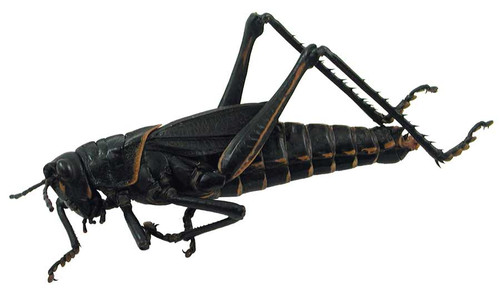Deepen your knowledge of entomology, the locust life cycle, and exoskeletons with this grasshopper specimen!
Our plain preserved lubber grasshoppers are large, approximately 3" long, and Grade A. Locust specimen genus and species can vary, but is typically Romalea microptera. Other Orthopterans, or insects belonging to the order Orthoptera, may include a katydid (bush cricket) or Acrididae (predominant family of grasshoppers).
All grasshopper specimen come ready to dissect, and each will include at least one hind leg to dissect; although, in some cases, it may be detached from the locusts' thorax.
Closely inspect a grasshopper's head (including their antennae, mouthparts, etc.), thorax, abdomen, and more! Despite the short distance from one end of its body to the other, there is much to investigate and learn from a grasshopper when you dissect and study it.
Note: Locust specimens are initially preserved with a formaldehyde solution, the best animal tissue fixative. The formaldehyde is then displaced first with water and finally with a glycol solution to produce a low-fume, wet specimen which will not decay over time.
Important Notice: For orders of 10 or more, there is a chance these specimens could be shipped in a 10-pack. If you require specimens to be individually packaged, please contact our customer service at (406) 256-0990.
HST Specimen Guarantee
In sealed, original packaging, our preserved locust specimens are guaranteed to remain fully preserved and free of decay for 12 months from the date of purchase.
Once the original package is opened, use grasshopper specimen within one month. For best results, observe the following storage procedures:
- Store insect specimen in heavy-duty, zip-lock bags to minimize drying between dissections.
- Insect specimen will slowly dry out or become contaminated in zip-lock bags; add a teaspoon of Specimen Holding Fluid to retain moisture.
- Freezing or refrigeration is not necessary and may damage fragile tissues.
Store your grasshopper specimens at normal room temperature—refrigeration is not required. Storage in attics or garages at high temperatures will damage the specimens. Once opened, specimens can be resealed in a zip-lock bag to prevent them from drying out for later use.
 Warning
Warning

